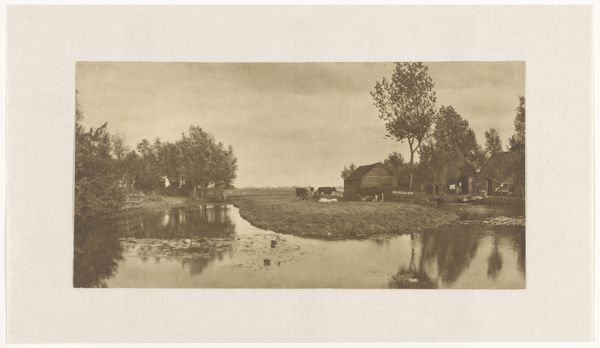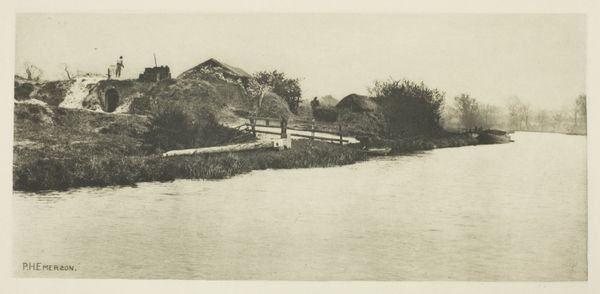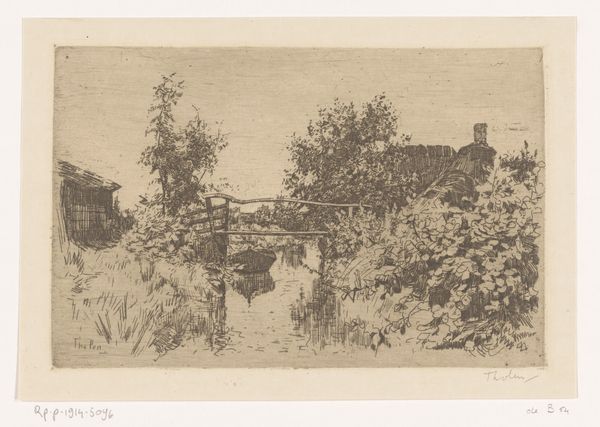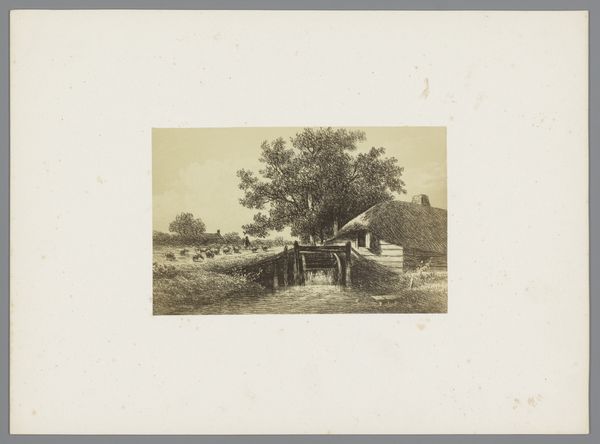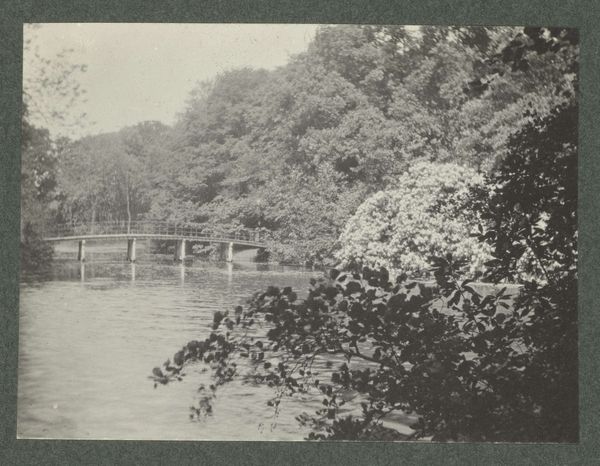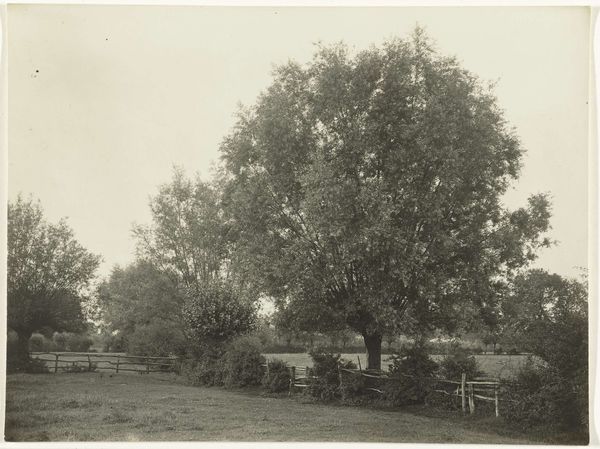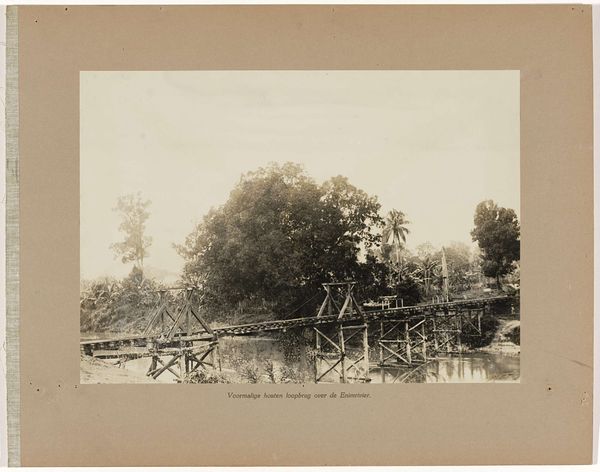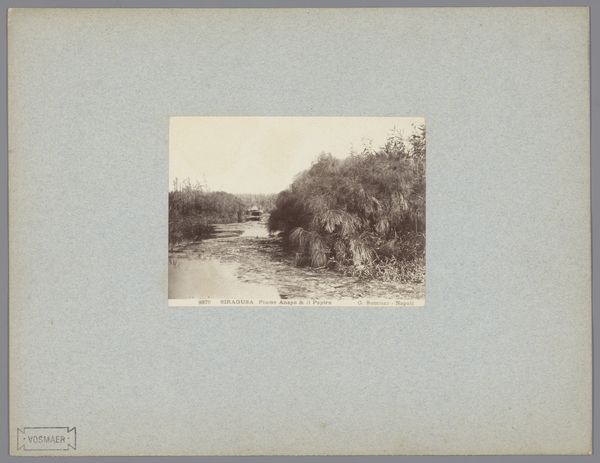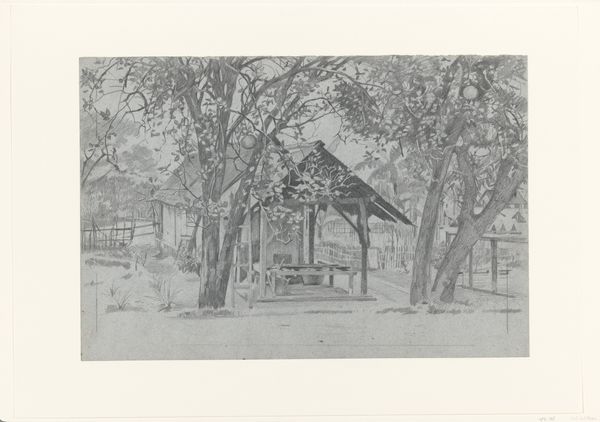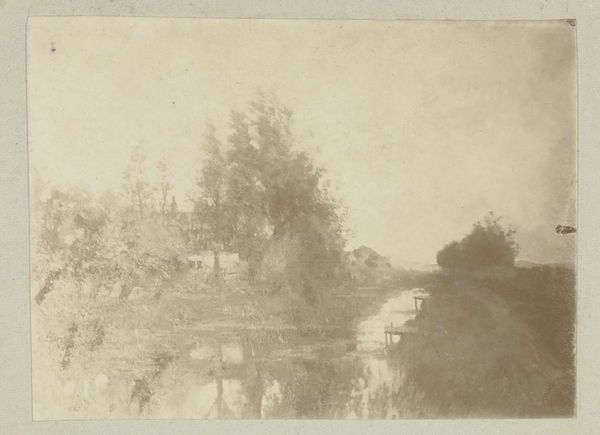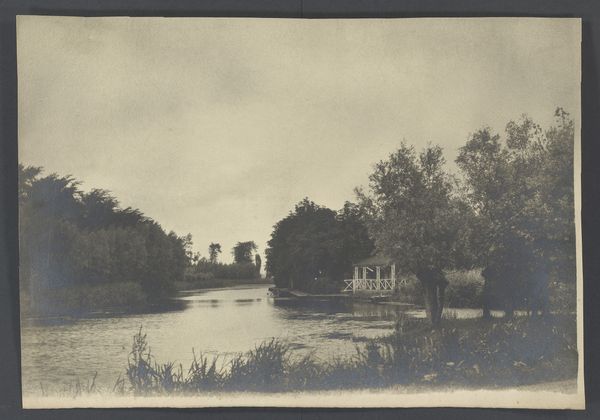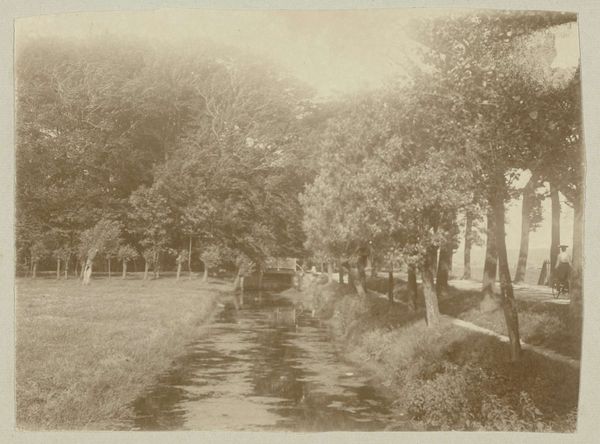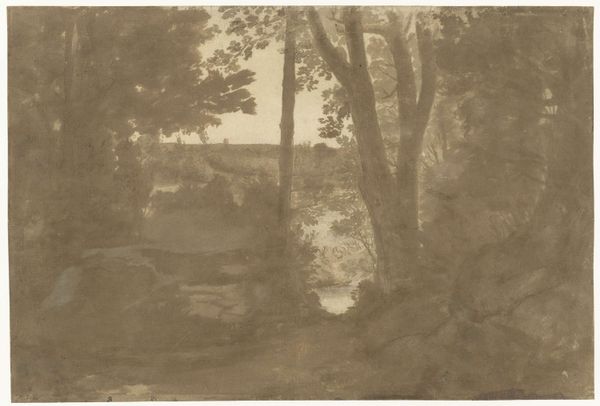
On the "Sow," Near Walton's House at Shallowford c. 1880s
0:00
0:00
photography
#
16_19th-century
#
pictorialism
#
landscape
#
photography
#
naturalism
Dimensions: 13 × 20.3 cm (image); 15.6 × 22.5 cm (paper); 24.4 × 32 cm (album page)
Copyright: Public Domain
Curator: Looking at this print, I'm immediately struck by its melancholic, dreamlike quality. It’s very quiet. Editor: I can see that. Well, let’s explore it a bit further. This photograph, titled "On the 'Sow,' Near Walton's House at Shallowford," was taken by Peter Henry Emerson, likely sometime in the 1880s. Curator: Ah, Emerson, deeply embedded in debates about photography’s status as art versus documentary. Was this created through a platinum printing process? The tonal range is beautiful, it almost renders a painted texture onto a photographic scene. Editor: Precisely, you can observe how he favors soft focus and tonal manipulation over sharp, documentary-style imagery. This connects him directly to the Pictorialist movement and their rejection of straight photography, and is evidence of his material concerns.. The print itself becomes an object to consider. We see his commitment to elevating photography through artistic methods. He emphasizes naturalism in his process, which you can feel in the image itself. Curator: I see. And knowing that it was created during the Victorian era, it becomes even more fascinating to examine. During this period of rapid industrialization, nature and landscape took on a unique nostalgic weight. I am interested in the rural English subject depicted in this image. Emerson wasn’t simply documenting the countryside; he was also framing an idealized vision of it, possibly for an audience that yearned for the perceived simpler times. What is Shallowford to him, and to England? Editor: That is certainly one lens to understand it through. This image allows us to reflect on class structures of that time as well. The ownership of land, and of representation itself, raises vital questions about access and the construction of "natural" identity. By creating art from photography, did he create an entry point into the canon of English art, dominated as it was then (and arguably still) by landscape painters like Constable and Turner? Curator: And on the bridge, leading towards that distant house; it evokes ideas of access to property, to work, to resources in these landscapes that is thought provoking. Editor: Right! He certainly pushes photography beyond a purely representational function and encourages discourse. He challenges us to consider the complex intersection between identity, artistic production, and the very act of seeing. Curator: The process of understanding Victorian sentiment towards an English identity intertwined with its environment gives valuable context to these material concerns. Editor: Indeed. Thanks to understanding the social framework, our considerations create enriched insight.
Comments
No comments
Be the first to comment and join the conversation on the ultimate creative platform.
